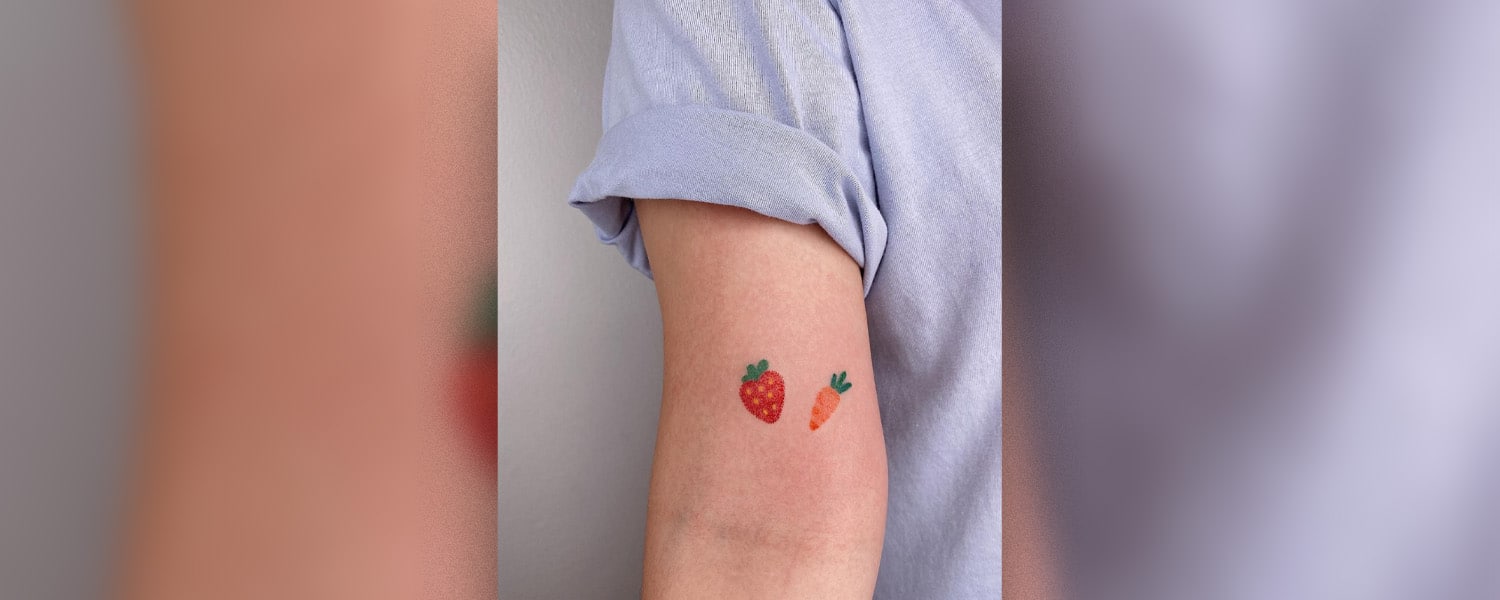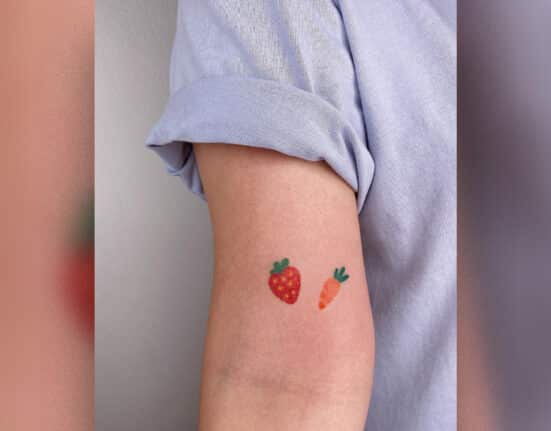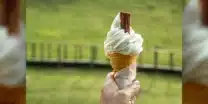TATTOOS have always been a part of the Philippines’ rich history. Before the country was colonized by the Spaniards, Filipinos’ ancestors would have tattoos all over their bodies. These were seen as symbols of strength and bravery, or of one’s social standing in society.
Often, these could be seen on the bodies of renowned hunters in the Philippines, such as those of the Visayan warriors called the Pintados, or the members of ethnic groups from Bontoc or Kalinga. Those who’ve seen any of Whang-Od’s works know what a Kalinga tattoo looks like.
The practice used in the past was referred to as “hand tapping” or “batok.” In the modern day, the hand tapping practice is kept alive by another genre that’s started to bloom in the Philippine tattoo industry: the handpoke tattoo.
Of course, this isn’t two say that the two are the same thing; one cannot be interchanged with the other. The traditional hand tapping method is still being kept alive and well by the likes of Whang-Od, and one of the similarities that they share is the fact that they rely solely on needles instead of guns or machines.
Perhaps another thing that they share is the stigma that still exists around them in the modern day–the stigma that exists around tattoos in general, despite them having been a part of our culture for years. And while tattoos have started making a comeback, many still prefer them to be done with machines or guns because they feel that handpoke tattoos take longer, or are more painful.
But handpoke tattoo artists Ally Pokes and Chelsi Amour are quick to say that that isn’t the case.
The artist’s process
Ally Pokes said that she found out about handpoke tattoos in 2015, and has been intrigued ever since then. However, she only started to seriously do it at the start of 2021.
“I was at a very unhappy place in my life. I just left a toxic graphic design job and my mindset at that time was like, ‘Okay, f*ck it, I’ll try being a tattoo artist. It’s not like I have anything to lose,’ and just jumped in,” she said.
SUGGESTED STORIES:
Usyk in tears for late father after historic heavyweight win
RIYADH, Saudi Arabia: An emotional Oleksandr Usyk shed tears for.
PBBM orders China wiretapping probe
President Ferdinand R. Marcos Jr. vowed to investigate the alleged.
Rising teenage pregnancies alarm government
TEENAGE pregnancies are on the rise, and the Commission on.
“I never thought I’d seriously pursue it, but I just went with the flow and it kinda just grew from there,” she added.
Chelsi Amour’s interest also started with mere curiosity, and then grew from there.
“I only wanted to do it for myself and the people I was really close with. It was a way for me to bond with friends,” she said.
She first began doing it in 2017, and then decided to pursue it full-time in 2019.

It just hits different
When asked why she chose to learn to do handpoke tattoos specifically, Ally answered that tattoo machines just weren’t her thing, recalling that she dropped it after just two weeks.
She said she “mellowed out more” during the handpoke process.
“I know a lot of people could be put off by how long the process takes as compared to a machine, but it’s something I’ve grown to love. I suppose the repetitive nature of poking little dots over and over is my form of meditation,” she said.
Chelsi also said she sees the lengthy amount of time it takes to do handpoke tattoos as a way to bond with her clients.
“Just as it can be therapeutic for my client, it’s also therapeutic for me to do the tattoo dot by dot and see it slowly take shape. I just find it more fun!” she said. “I’ve created some solid bonds and friendships with a handful of clients, and it’s such a nice, warm feeling.”

Man vs. machine
Many often dismiss the idea of getting a handpoke tattoo because they think they can get the same result with a machine, but Ally argued that handpoke tattoos just feel more organic; she treats each work she does as “permanent pointillism.”
She also said the tattoo’s final look has more to do with the artist’s style than the method used.
“I think a bigger factor to consider is an artist’s personal style,” Ally said. “Even with handpoke, there are artists that have different specialties, like linework, shading, and color. The best thing to do is to look at an artist’s portfolio. See if their style is to your liking.”
She also does not accept tattoo requests that would not fit in with her style, she said.
“Sometimes I still have people message me and ask for super fine line tattoos and delicate line work, and I just tell them straight up that they would be better off asking a machine artist instead,” she said.
According to Chelsi, handpoke tattoos are generally known to look more grainy or stippled.
“For machine-done tattoos, the lines can be cleaner, and the shading or filling in of colors can be smoother,” she said.
Like Ally, she believes that it all comes down to the artist’s style.
“I’ve seen some tattoos that I wouldn’t have known were handpoked if the artist or the person who got them didn’t point them out. There are also tattoo artists who use tattoo machines that specialize in stipple or dot work tattoos,” she said.
Not a contest
At the end of the day, the biggest thing to remember is that it’s not a competition–just a matter of preference. Chelsi and Ally, for example, follow routines that are very similar to those of any other tattoo artist.
“With handpoking, we don’t use a tattoo machine, and it takes longer to complete a tattoo,” Chelsie said.
But the rest of the process is the same as when doing tattoos with a machine, she said.
“Everything else that we use, like the ink and needles, and our processes are more or less the same. We still need to learn how to clean our stations and studios properly, how to set up our tables and tools, how deep into the skin we can tattoo, how to form nice lines, etcetera,” she said.
On the debate between handpoke tattoos over ones done by a machine, Ally simply said: “At the end of the day, it’s just a medium. The focus should always be on the personal style of the artist.”

Getting rid of handpoke jitters
The number one thing these two artists had to say about handpoke tattoos? It’s definitely not as painful as it looks.
“I know the idea of someone manually poking a needle into your skin can be intimidating, but it’s really not as bad as you think!” Ally said.
“A ton of clients tell me that facials and waxing hurt a lot more in comparison,” she added.
Chelsi said she recommends that first-timers start with small, simple designs.
“It’s also important to check the artist’s work and process, as that’s what would help you decide if they’re someone you can trust with your skin and your tattoo. A lot of artists have guides on their websites regarding their process, but don’t be scared to ask them if you still have concerns,” she said.
At the end of the day, you should get whatever design you’re happy with. But don’t forget to weigh out all your options before doing so first–be it handpoke or machine.

If you’re feeling nervous, just listen to Fergie and remember: big girls don’t cry!












